
- 1 Introduction
- 2 Features
- 3 Package Contents
- 3.1 Mavic Air 2
- 3.2 Mavic Air 2 Fly More Combo
- 3.3 Mavic Air 2 Fly More Combo
Features
- Weight 570 g
- GPS / GLONASS satellite positioning
- Front / back and bottom surround imaging system world (including: visual, ultrasonic and IR sensors additional LED illumination for correct operation of the system in poor lighting conditions)
- Digital video transmission technology OcuSync 2.0
- Range of work. frequencies 2.4GHz / 5.8GHz with the ability to automatically switch in real time to the channel with the least interference
- Max. FPV removal distance 10 km
- Max. video stream quality 1080P
- Max. flight time 34 min
- Max. ceiling above sea level 5000 m
- Max. horizontal flight speed 68.4 km / h
- 48MP 4K camera built on 1/2-inch Sony IMX586 CMOS matrix with a pixel size of 0.8 microns; with built-in Bayer color filter array
- 3-axis mechanical image stabilization
- Max. Movie recording mode: 4K @ 60 fps
- Max. photo resolution: 8000 × 6000 pixels
- Max. bit rate 120 Mbps
- Digital zoom (2x for 4K / 2.7K; 4x for FHD)
- HDR modes for stills / videos / panoramas
- Function SmartPhoto
- 4-Mode 8K / 4K Hyperlapse (Course Lock / Free / Waypoint / Circle)
- Smart Follow FocusTrack (Spotlight 2.0 / ActiveTrack 3.0 / Point of interest 3.0)
- 6 × automatic flight and shooting modes QuickShot (Dronie / Circle / Helix / Rocket / Boomerang / Asteroid)
- D-Cinelike color profile
- Video codecs H.264 / H.265
- New control equipment (with removable sticks) and max. operating time 240 minutes
- Support DJI Smart Controller
- Advanced third generation pilot assistance system APAS 3.0
- Built-in memory 8GB
- DJI Fly mobile application
- Built-in mob. DJI Mimo editor application
- Two sets of ND filters
- Slot for microSD memory cards up to 256GB
- Connection interfaces: USB-C
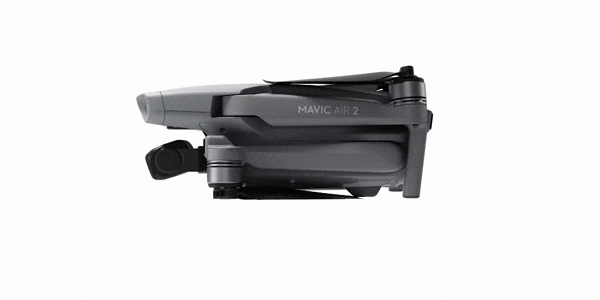
Options
The developer offers the drone in four trim levels:
Mavic Air 2
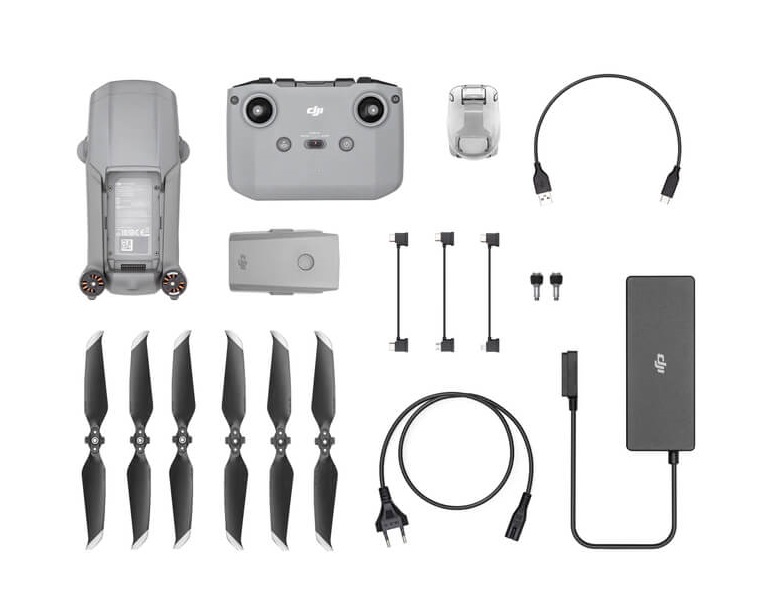
Mavic Air 2 Fly More Combo
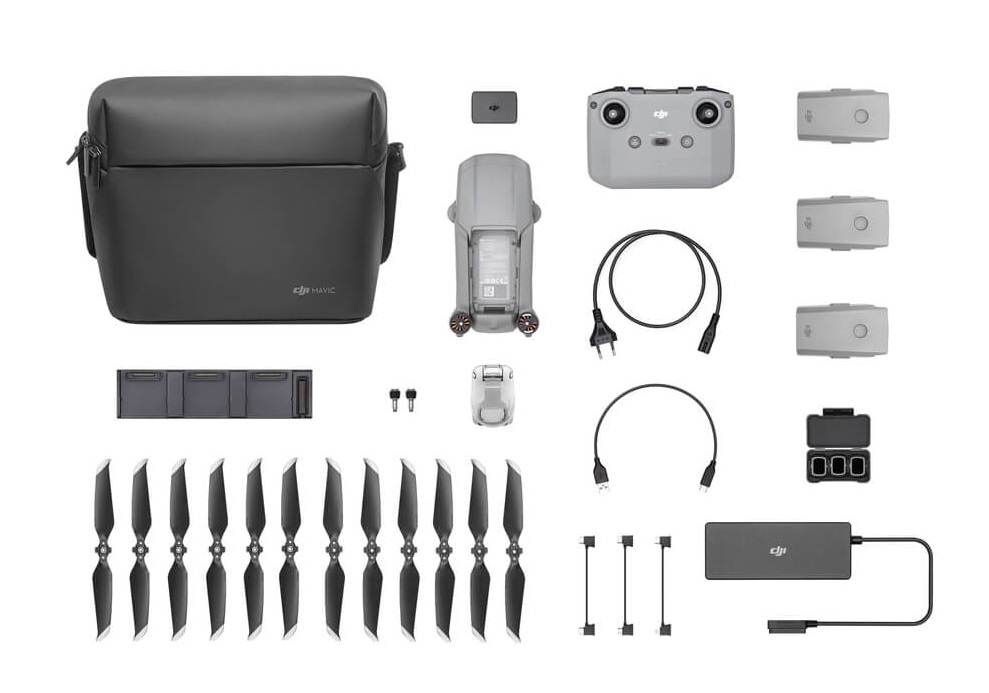
Mavic Air 2 Fly More Comboangular velocity:
FCC: ≤26 dBm CE: ≤20 dBm SRRC: ≤20 dBm MIC: ≤20 dBm
5.725-5.850GHz
FCC: ≤26 dBm CE: ≤14 dBm SRRC: ≤26 dBm
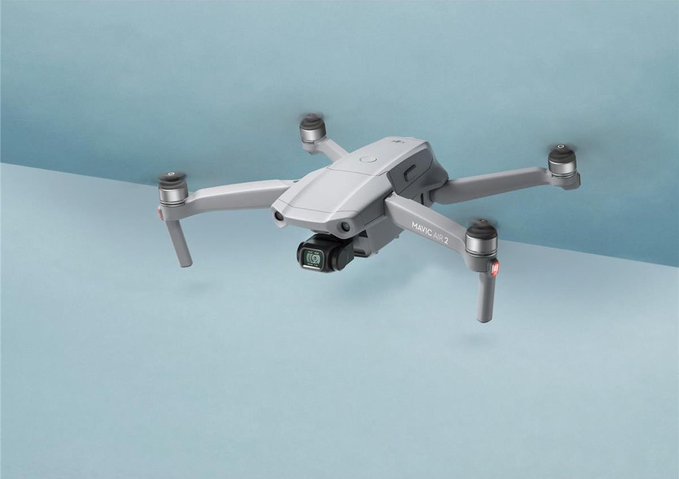
Battery
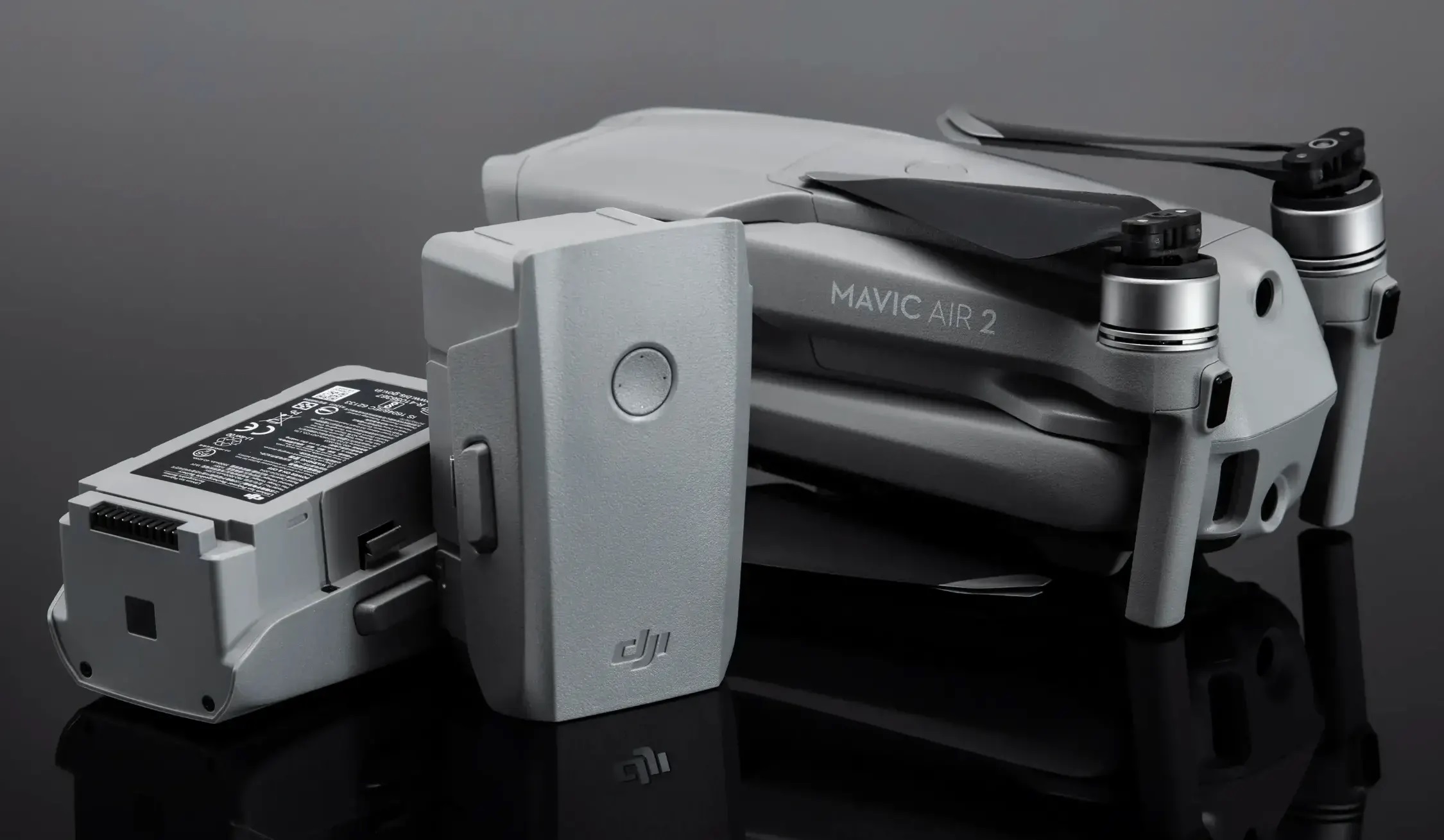
Camera
2x digital zoom in 2.7K movie @ 60/50/48/30 / 25 / 24fps
4x digital zoom in 1080P video at 60/50/48/30/25/24 fps
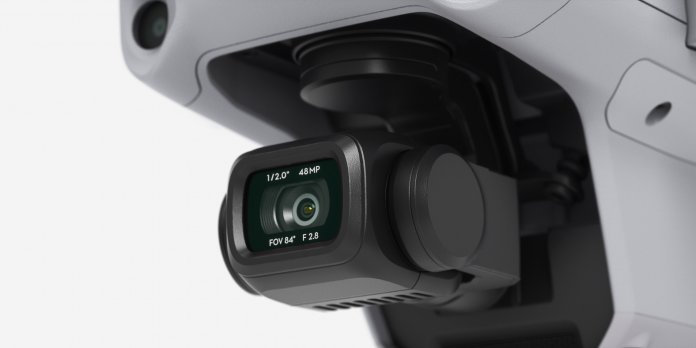
Suspension
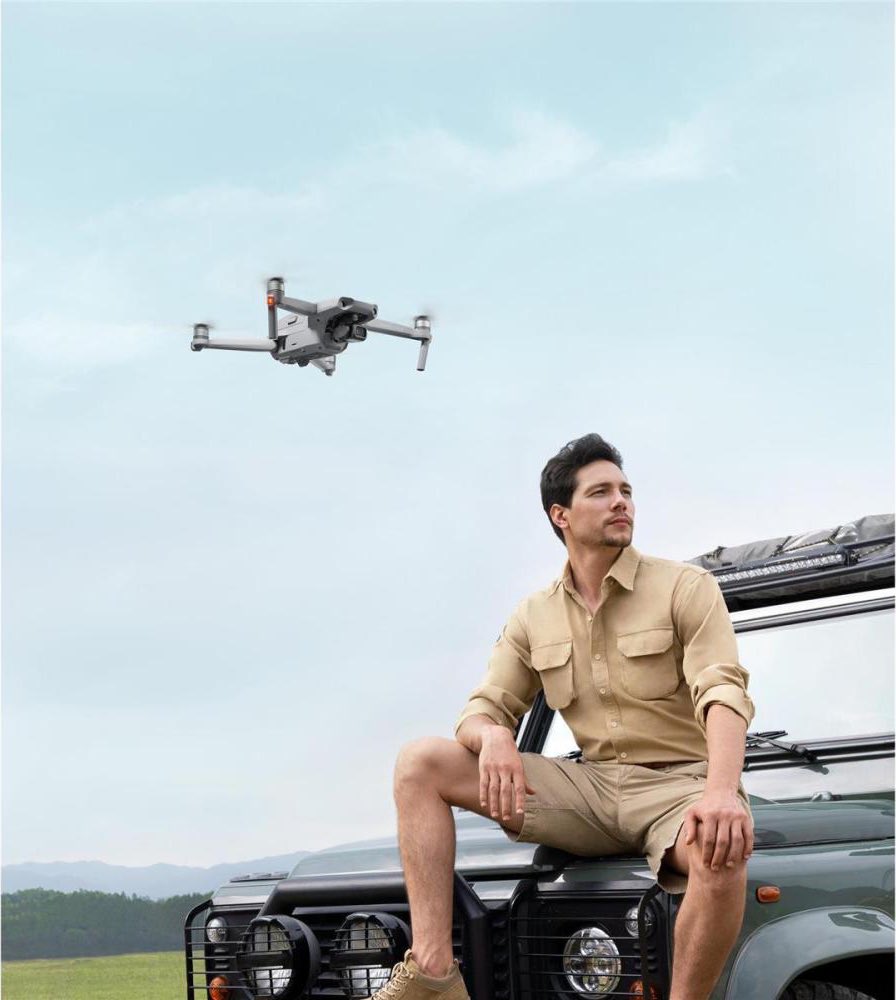
Sensor system
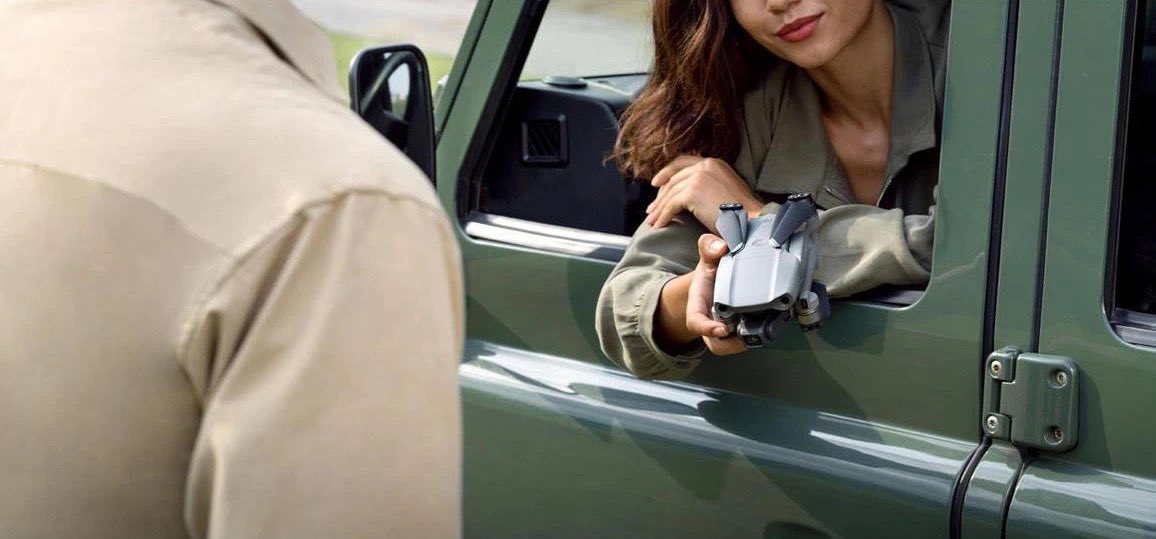
Security
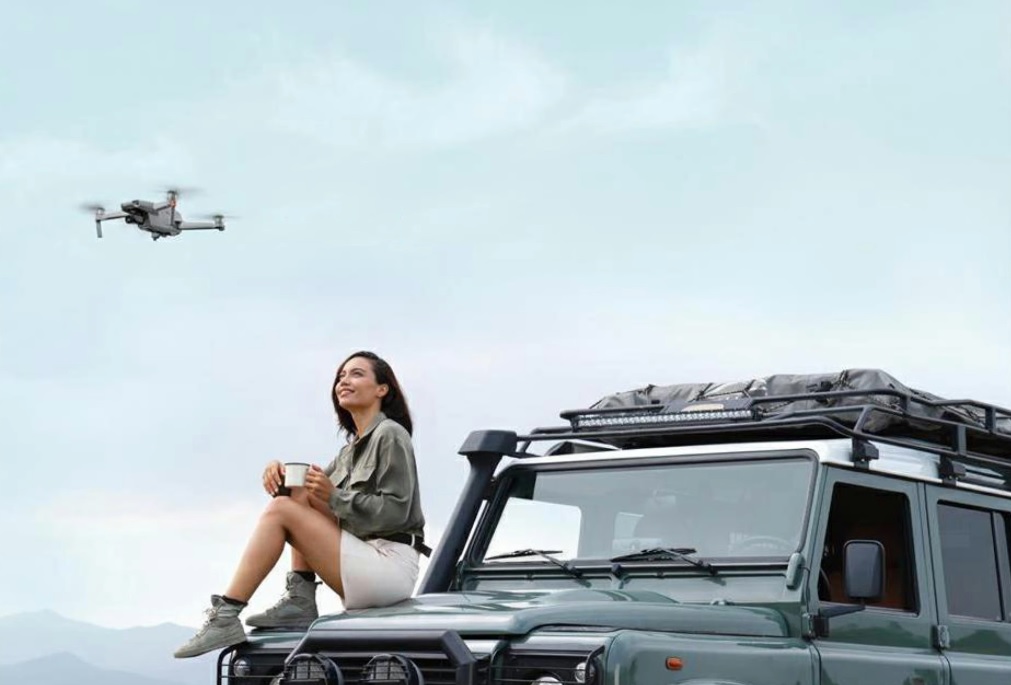
Video Link
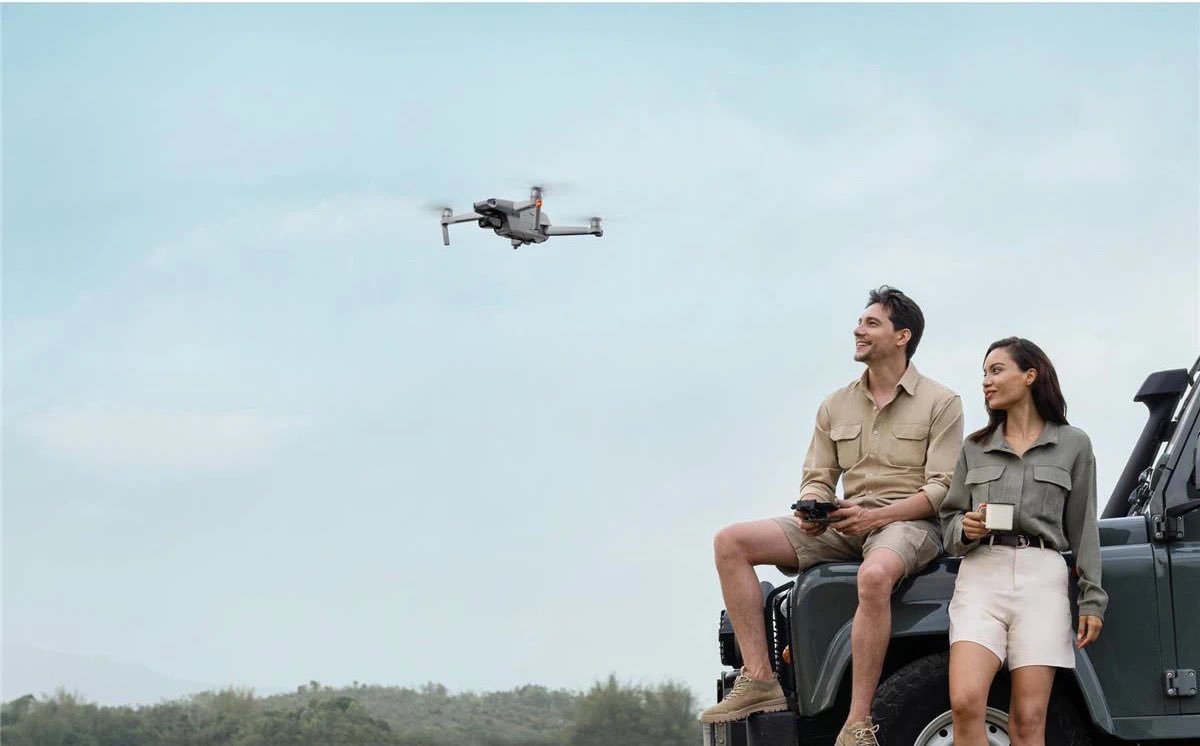
Control panel
5.725-5.850GHz
FCC: ≤26 dBm CE: ≤14 dBm SRRC: ≤26 dBm
Camera Potential
The Mavic Air 2's photo and video quality has taken on a whole new level. It can now shoot remarkably smooth 4K video at 60fps. A D-Cinelike color profile is available, allowing more information to be stored for post-processing, and the HEVC (H.265) video codec will record more image information using less memory without loss of dynamic range and detail.
HDR video
Thanks to the new high-performance Sony IMX586 sensor with built-in Bayer color filter array, the new Mavic Air 2 is now also available in HDR mode for video recording. Exposure levels are now evenly distributed across the entire area of the frame, accurately capturing light and dark details. Superimposing such frames on top of each other makes it possible to obtain a colorful, balanced and attractive picture with a high dynamic range at the output.
48MP photo
With the advent of the 1/2-inch CMOS sensor, the second generation drone has the ability to capture impressive 48-megapixel photos that do not lose detail even when zoomed in.
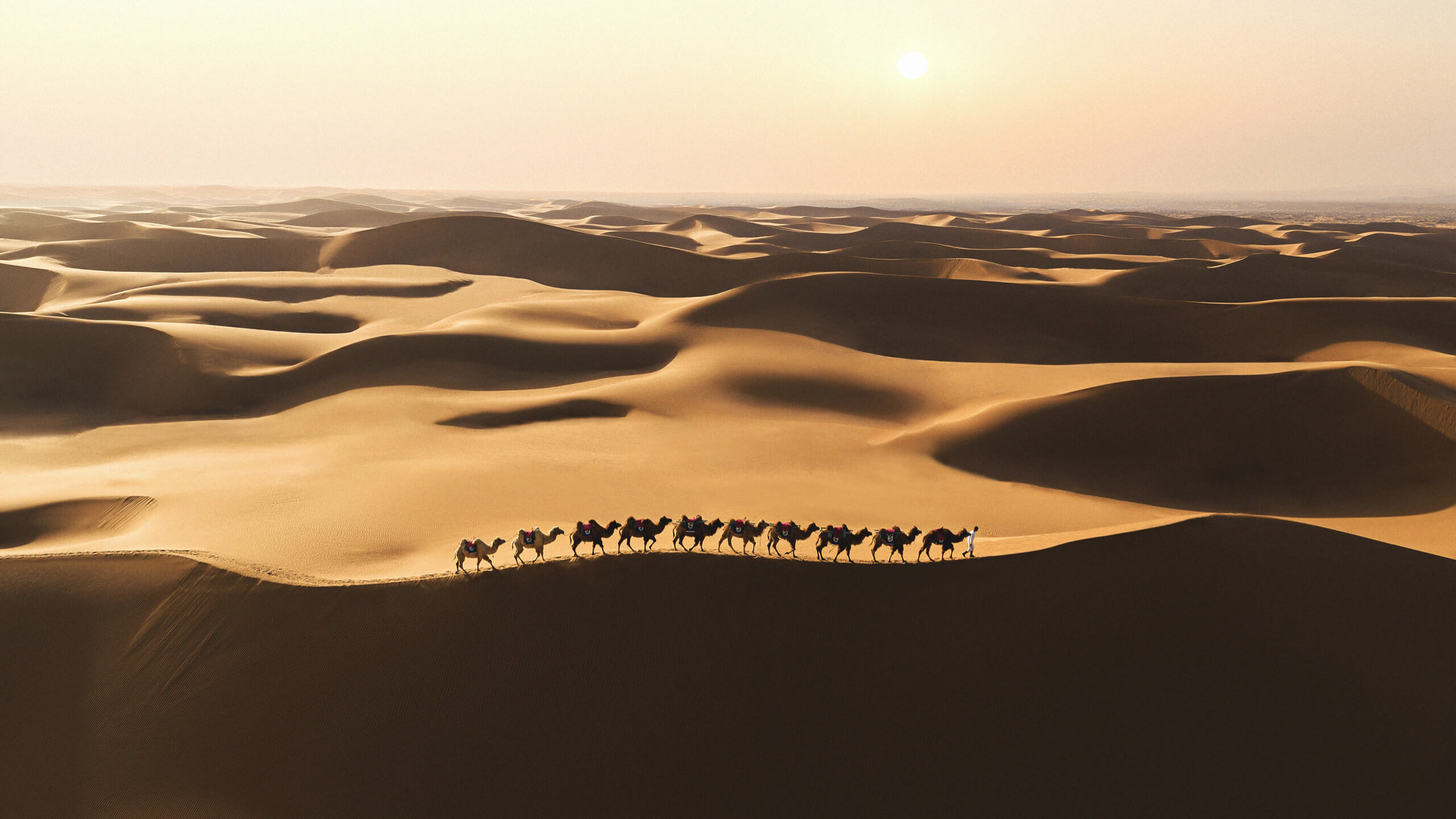
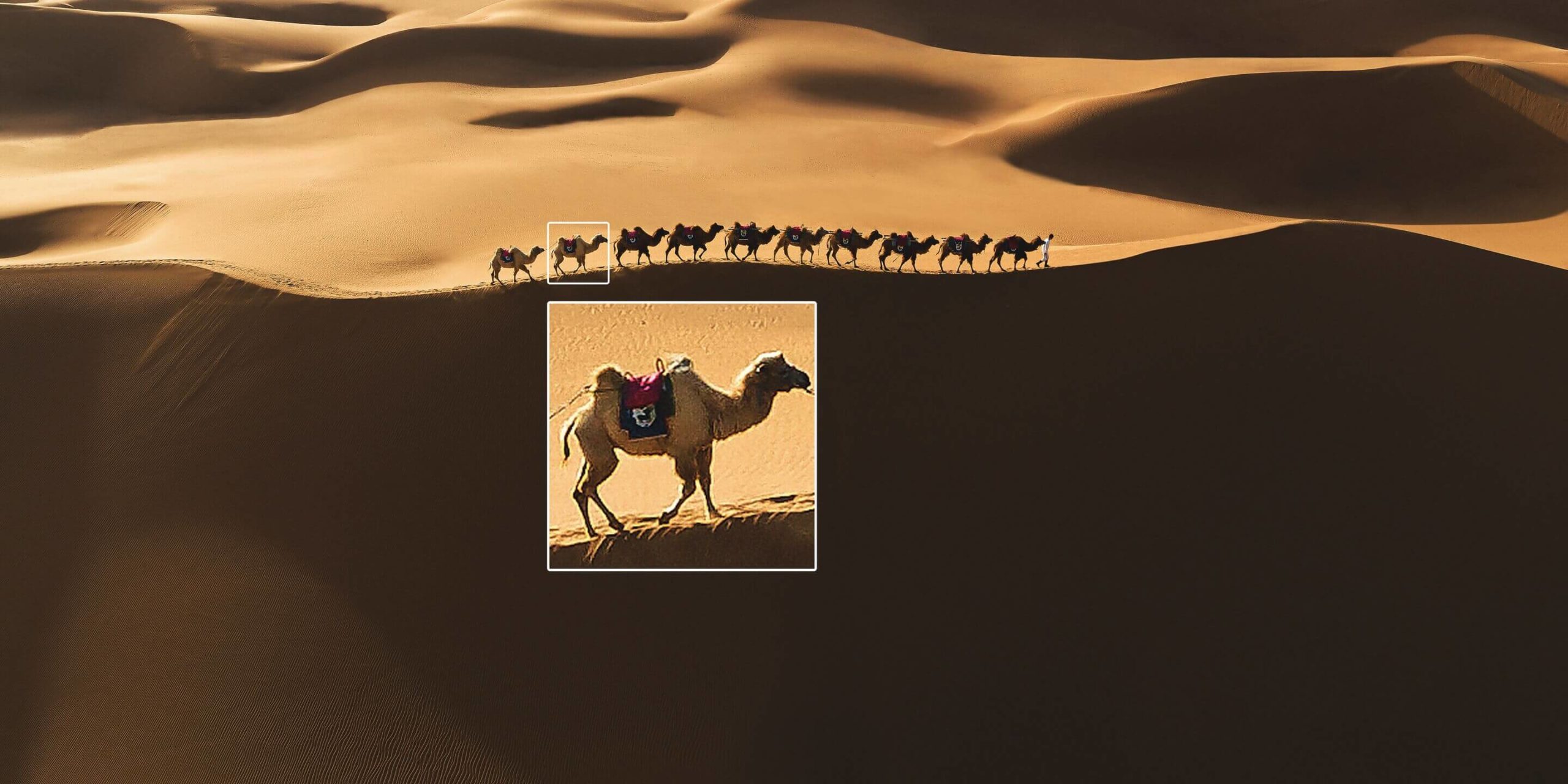
SmartPhoto function
A new scene recognition function has been added to the arsenal of tools to improve the quality of photography - SmartPhoto, which combines HyperLight and HDR modes for optimal results. With Scene Recognition, the function allows you to optimize various camera settings for five different scenes: sunset, sky, grass, snow and trees.
- B In overexposed lighting conditions, HDR dramatically improves dynamic range by adjusting exposure settings and combining frames to produce brighter, higher-quality photos.
- HyperLight optimizes photos taken in low light conditions, resulting in reduced noise and improved clarity.
Photos taken in SmartPhoto mode are 12MP.
HDR Panorama
The Mavic Air 2 offers DJI's most advanced panoramic mode, with wider dynamic range, vivid colors, and stunning detail.

Intelligent Flight and Capture Modes
The Mavic Air 2 combines a powerful camera with intelligent shooting modes for cinematic results. Creative aerial photography has never been easier.
FocusTrack
Professional quality shots made easy with FocusTrack. An easy-to-use set of predefined intelligent object tracking modes, including Active Track 3.0, Spotlight 2.0 and Point of Interest 3.0, so you don't have to be a filmmaker to be creative.
Active Track 3.0
Object tracking, obstacle avoidance is smoother than ever with the arrival of DJI's third generation of ActiveTrack technology. With improved pathfinding and faster, more accurate prediction of lost objects, this technology will keep the selected subject in the center of the frame, even if it is moving behind a tree.
Spotlight 2.0
In this convenient mode, simply select the subject to shoot. Then you can direct the drone in any direction, and the camera will always track the selected object.
Point of Interest 3.0
The third generation of the Point of Interest 3.0 mode is noticeably better compared to POI 2.0. The recognition of flat surfaces has been optimized and the possibility of object loss has been eliminated. POI 3.0 can now also track dynamic objects such as people, cars, and boats.
8K Hyperlapse
The Mavic Air 2 supports 8K Hyperlapse video, which warps time and space for particularly unique footage. No post-processing. Choose a location and one of the four available modes, and the DJI Fly app does the rest.
Course Lock
Free
Waypoint
Circle
Hyperlapse in 8K quality is only available for Free and Waypoint modes.
QuickShots
QuickShots modes are the calling card of almost every DJI drone. The Mavic Air 2 is no exception. With these modes, it takes just a few taps to create a complex air route for a short, cinematic movie. After shooting, the result can also be easily edited by overlaying music, applying all kinds of effects and filters using intuitive Story templates, so that you can later share the masterpiece on social networks. There are 6 QuickShot scripts available:
Dronie
Circle
Helix
Rocket
Boomerang
Asteroid
OcuSync 2.0
Currently digital t OcuSync 2.0 video transmission technology provides the Mavic Air 2 with a record FPV distance of up to 10 kilometers among all flying semi-professional DJI products, with 1080P video streaming quality.
2.4 GHz / 5.8GHz
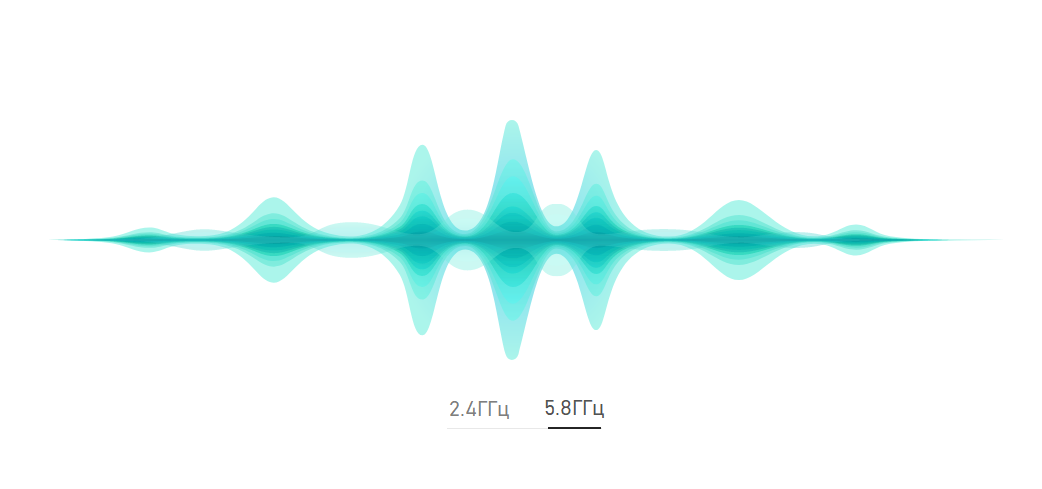
The Mavic Air 2's communication system supports dual-band 2.4 / 5.8 GHz and is able to automatically switch to the best quality channel in real time providing minimal interference, which significantly increases the safety of piloting in difficult conditions.
Max. FPV distance is relevant for FCC standard (in the frequency range of 5.8GHz) in an interference-free area. For Russia, only the 2.4 GHz frequency range is available, which significantly reduces the max. removal threshold from 10 km to 6 km. Control the drone within visual range, except in cases where it is allowed to fly outside of it. Observe local laws and regulations.
Power supply
The optimal combination of drone weight and properly selected power supply allowed the developer to achieve a record flight time among all DJI drones of 34 minutes, which in real conditions (depending on the style of piloting and environmental conditions) will provide the user with a stay in the air for at least 30 minutes.
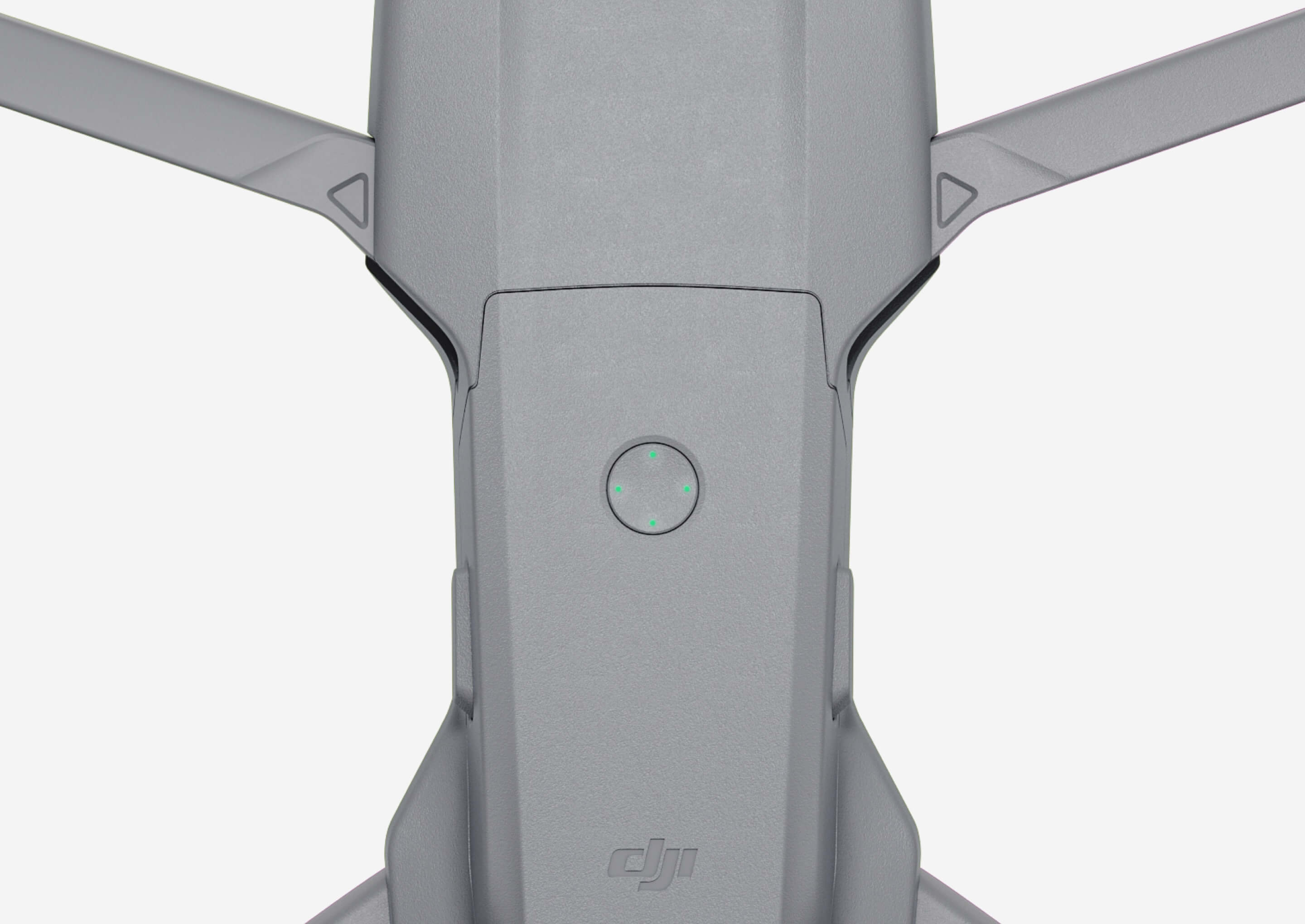
The developer specifies that the maximum flight time was obtained when flying at an angle of 9 ° at a speed of 18 km / h in calm conditions.
Obstacle Avoidance System
To sense the environment, the Mavic Air 2 is equipped with a 3-way sensor imaging system: Front (2 visual sensors; work. range up to 22 meters) / Back (2 visual sensors; working range up to 23.6 meters) / Bottom (IR sensors). For correct operation of the lower complex of sensors in conditions of insufficient lighting (important for an accurate and safe landing), the system works in conjunction with LED illumination located also in the lower part of the drone (it turns on automatically; forced switching on and off is allowed).
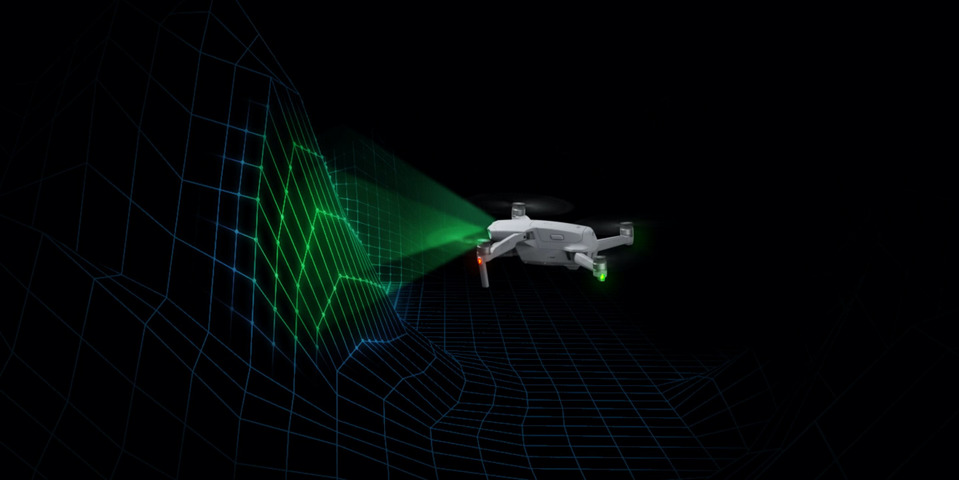
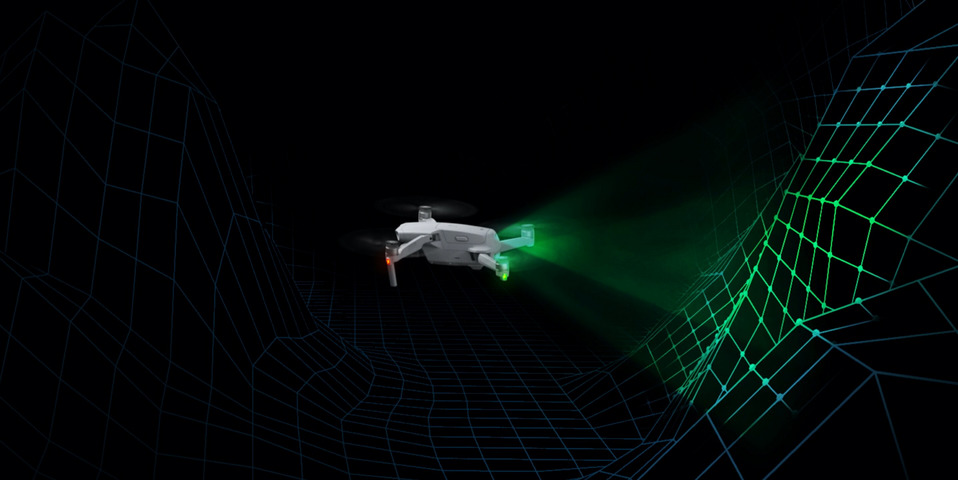
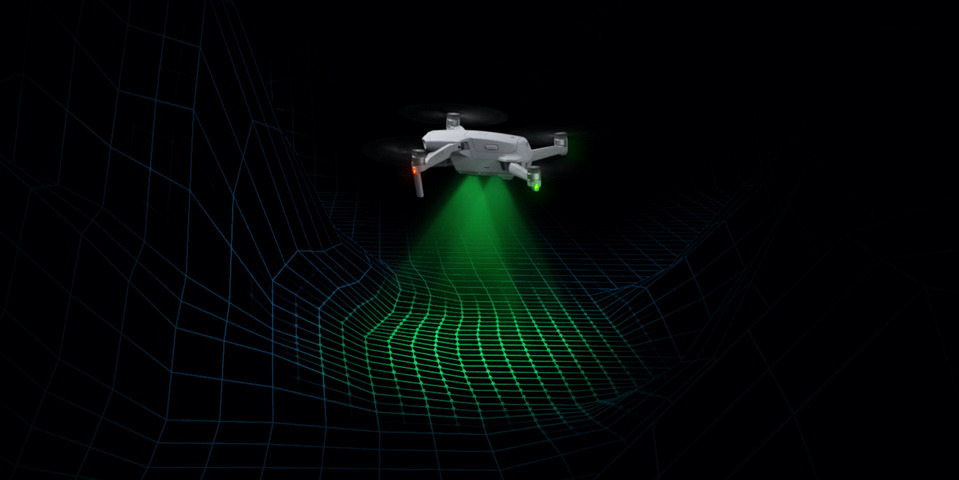
APAS 3.0
Advanced Pilot Assistance Systems (APAS) 3.0 - Advanced Third Generation Pilot Assistance System uses advanced mapping technology for smooth tracking and confident obstacle avoidance in challenging environments. The effectiveness of obstacle avoidance and automatic flight planning has improved significantly over previous generations of the system, which increases safety and provides more operational flexibility.
The developer notes that APAS 3.0 and FocusTrack are not available when recording in modes 4K at 60, 50 and 48 fps, 2.7K at 60, 50 and 48 fps and 1080P at 120 and 240 fps.
Remote Controller
The completely redesigned Mavic Air 2 remote controller is ergonomically designed for a better grip and removable sticks for greater portability, and also boasts an impressive battery life of 240 minutes. The new holder greatly facilitated the installation and connection of the smartphone, and the built-in antennas provided more convenient interaction with the equipment without deteriorating the quality of signal reception.
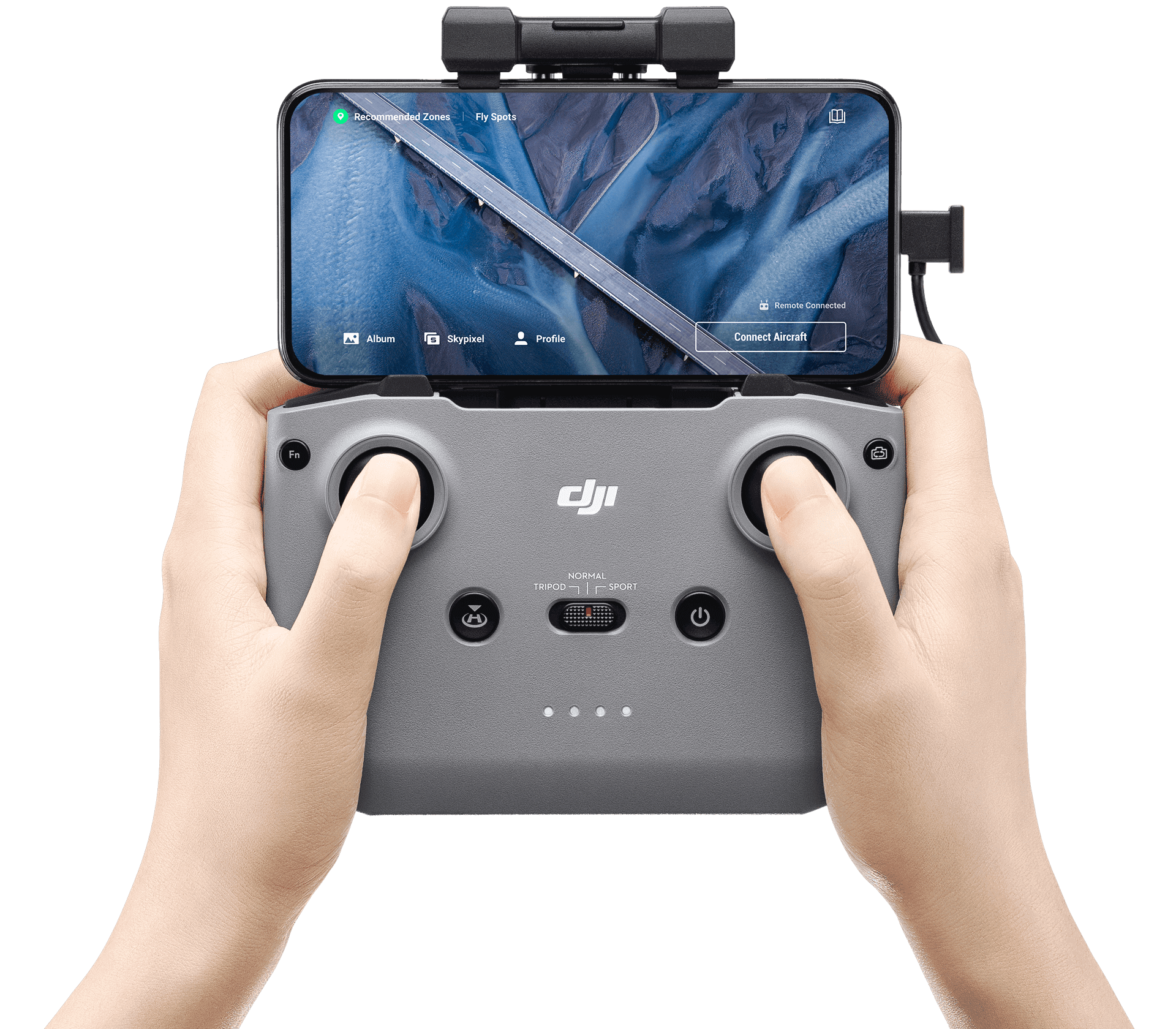
Drone control is also possible through the best universal control equipment DJI Smart Controller, the manufacturability and functionality of which have already been appreciated by all advanced users.
The developer clarifies that the battery life was measured when working with an Android smartphone without interference. In turn, this suggests that the duration of the remote control, together with devices based on iOS, should be slightly longer.
Mob. app
In addition to controlling drone settings, the DJI Fly app allows you to easily edit your footage. The software integrates the DJI Mimo editing suite that provides access to manual settings, advanced features and intuitive templates to create professional-looking compositions in seconds.
ND Filters
Two sets of ND filters are available for the Mavic Air 2 to help the user control exposure and provide more creative options. The ND 16/64/256 kit is useful for adjusting shutter speed even in over-lighting conditions, and the ND 4/8/32 kit will help you capture bright images even at low ISOs.

ND16 / 64/256 filters are included in the extended package of the Fly More Combo. ND4 / 8/32 filter set sold separately.
Price
The DJI Mavic Air 2 is now available for order. In addition to four configurations, the consumer has an extended DJI Care Refresh service package for $ 79, which includes the ability to replace the product in the event of an accident / crash, water damage or any other reason (but not more than two devices per year), as well as receiving priority support and expert advice from DJI product experts. Plus DJI will cover shipping costs in both cases, whenever a replacement product is sent out. The latest shipping terms apply only to the country where DJI Care Refresh was purchased. Depending on the configuration, the prices for the drone are in the following order:
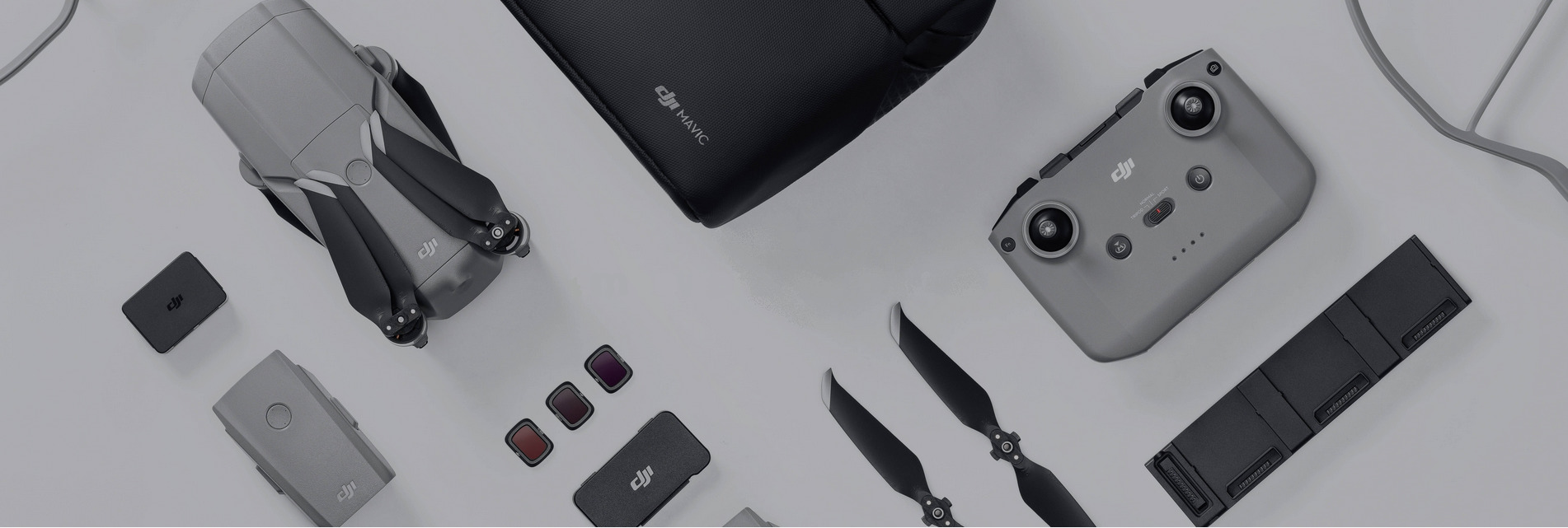
- Mavic Air 2
- Mavic Air 2 Fly More Combo
- Mavic Air 2 Fly More Combo
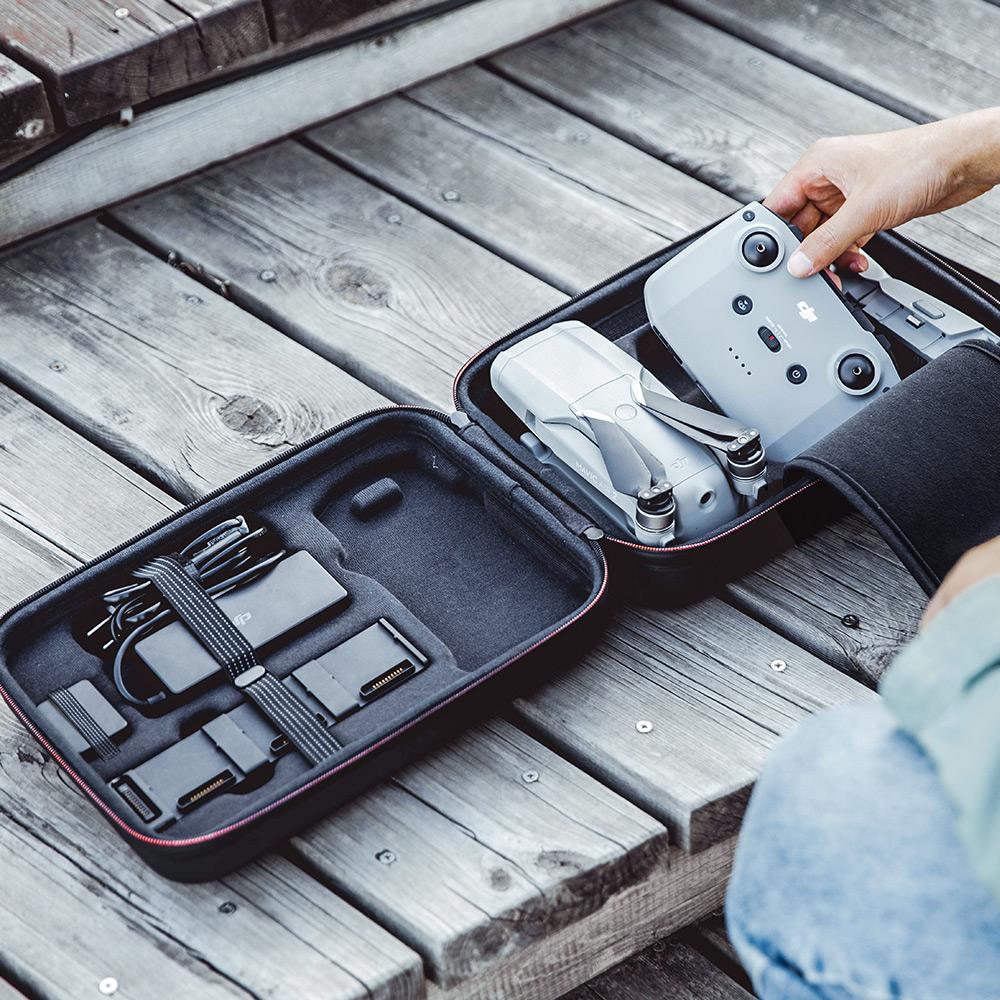
On April 15, 2021, DJI unveiled an even more advanced version of the drone. The most detailed information about the DJI AIR 2S can be found in our review.
FAQ
Drone
Q. What are the main improvements to the Mavic Air 2 compared to the Mavic Air?
A. Significantly improved camera performance, intelligence, flight times and video streaming, and drone interactions are now implemented through the new DJI Fly app for even more optimized flight.
Q. How do I properly install the propellers on the motors?
A. Attach the white-marked propellers to the white-marked motors. Next, attach the unmarked propellers to the unmarked motors. Make sure the propellers are attached correctly, otherwise the drone will not be able to take off.
Q. Is the Mavic Air 2 compatible with DJI Goggles or DJI Goggles RE FPV goggles?
A. No.
Q. Which microSD card should I use?
A. SanDisk Extreme PRO 64GB V30 A2 microSDXC SanDisk High Endurance 64GB V30 microSDXC SanDisk Extreme 64GB V30 A2 microSDXC SanDisk Extreme 128GB V30 A2 microSDXC Extreme SanDisk Extreme 256GB V30 A2 microSDXC Lexar Lexar 667x 64GB V30 A2 microSDXC Lexar High-Endurance 64GB V30 microSDXC Samsung EVO 64GB microSDXC Samsung EVO Plus 64GB microSDXC Samsung EVOX Plus 256GB Kingston 128GB V30 microSDXC Netac 256GB A1 microSDXC.
Q. Is the Mavic Air 2 waterproof?
A. No.
Q. How do I install ND filters?
A. Carefully hold the camera to avoid damaging it, and slowly rotate the filter to install or remove it. Make sure the ND filter is securely installed to avoid accidental separation during flight.
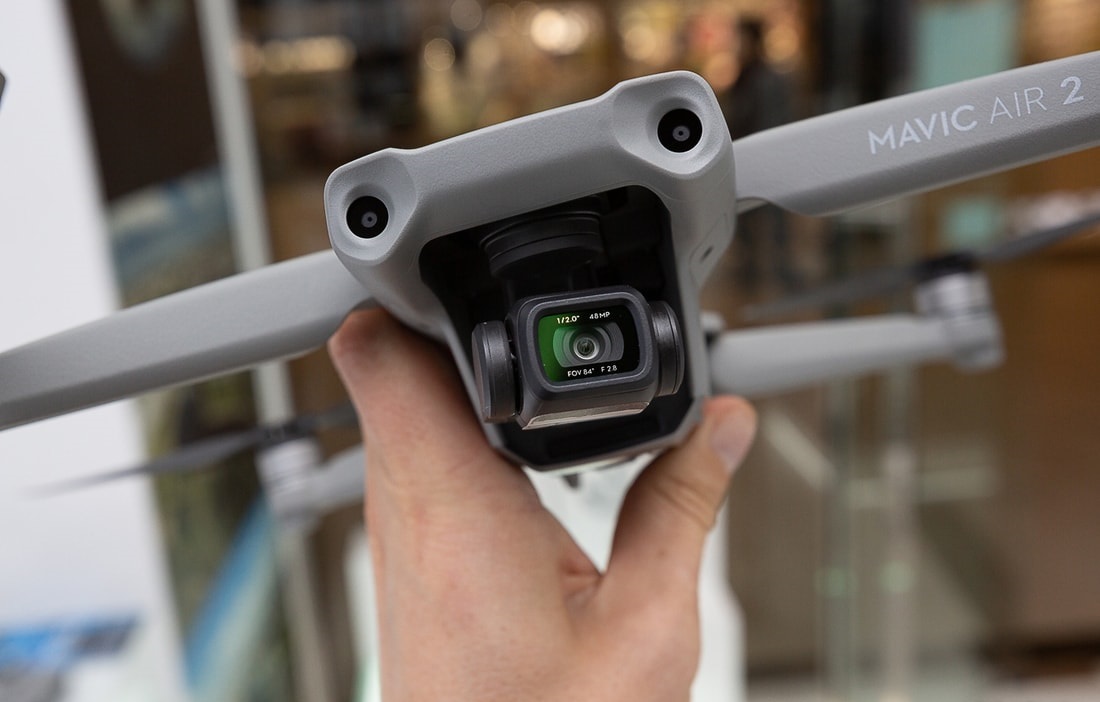
Safety and Obstacle Sensing
Q. Does the Mavic Air 2 have additional LED lighting?
O. Yes. The Mavic Air 2 has additional lighting for improved visibility and safety in low light conditions, similar to the Mavic 2 Series.
Q. Does the Mavic Air 2 provide obstacle detection in all directions?
A. No. The Mavic Air 2 provides forward, backward and downward obstacle detection.
Q. What is the difference between APAS 2.0 and APAS 3.0?
A. APAS 3.0 has been significantly improved over previous generations. The system now creates a real-time map of its surroundings to provide one of the best obstacle avoidance techniques available on DJI drones.
Q. What is the difference between ActiveTrack 2.0 and ActiveTrack 3.0?
A. Through the integration of APAS 3.0 Obstacle Avoidance System, ActiveTrack 3.0 has been significantly improved over ActiveTrack 2.0. Overall tracking capabilities have improved dramatically, resuming tracking after object loss is significantly faster than ever.
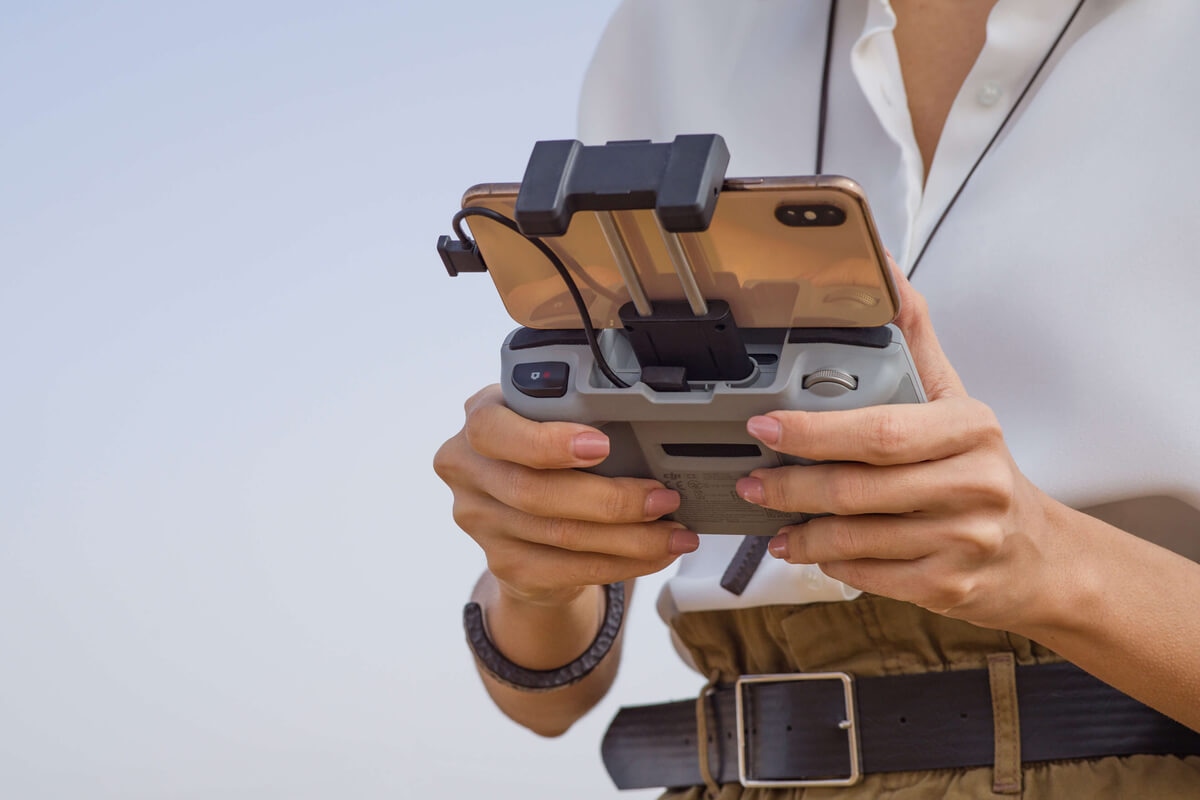
Remote Controller and Video Streaming
Q. Is the Mavic Air 2 compatible with the DJI Smart Controller?
A. Yes.
Q. Is the Mavic Air 2 compatible with the Mavic 2 remote?
A. No.
Q. How much has OcuSync 2.0 been improved?
A. OcuSync 2.0 supports the 2.4 and 5.8 GHz frequency bands. It is distinguished by higher noise immunity due to automatic switching between frequencies, provides transmission of a video stream in FHD quality at a distance of up to 10 km (achieved in an interference-free area and in FCC mode).
Q. Does the stock remote control have an HDMI port?
A. No.
Q. How can I improve my signal reception?
A. There are antennas in the smartphone clip on the remote control. Make sure the antennas are pointing towards the aircraft. Refer to your user manual for more information on correct antenna placement. Also, make sure that you are not carrying any transmitting devices and that Wi-Fi and Bluetooth are turned off on your mobile devices.
Q. What are the advantages of the new control equipment?
A. The remote boasts an extended battery life of up to 240 minutes, a more comfortable grip, an improved antenna design, and a more comfortable viewing angle when viewing from the screen.
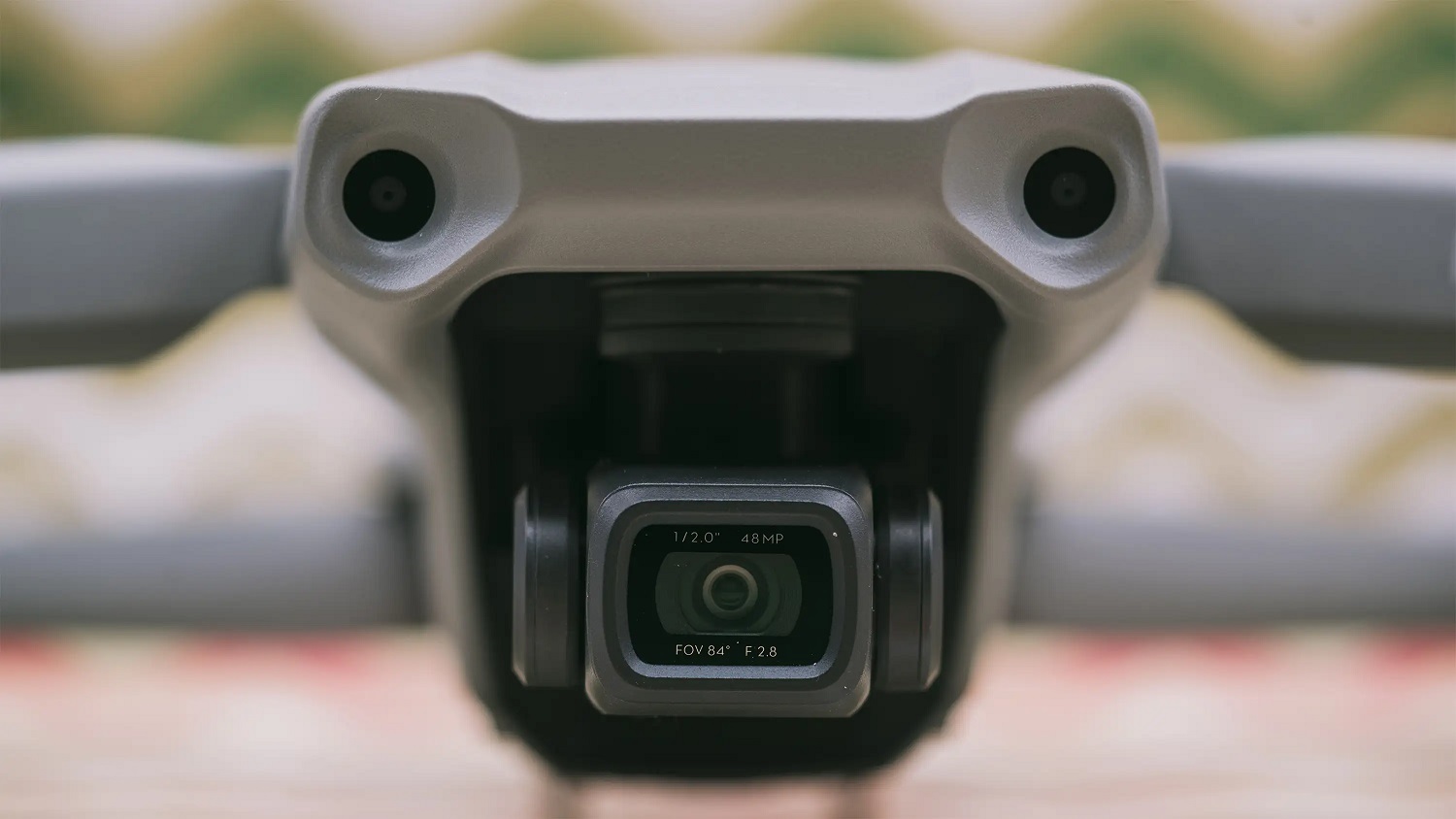
Camera
Q. What resolutions and photo formats are available?
A. Regular photographs can be taken at 12 or 48 megapixels, and RAW format is also available for more sophisticated editing.
Q. What video modes does the Mavic Air 2 support?
A. The Mavic Air 2 supports normal video up to 4K @ 60fps and HDR video up to 4K @ 30fps. Slow-motion video is available in 1080p resolution at up to 240fps (8x slow motion).
Q. Can I shoot in Dlog or another neutral color profile?
O. Yes. The Mavic Air 2 offers a neutral D-Cinelike profile for deeper post-processing of your footage.
Q. What are the advantages of the H.265 video codec?
O. HEVC (H.265)-is a more modern video codec than H.264; it retains more detail and provides higher image quality.
Q. Can I manually control the camera settings?
O. Yes.
Q. What is SmartPhoto?
A. SmartPhoto combines technologies such as scene recognition, HyperLight and HDR in one mode for optimal results. Scene Recognition optimizes various camera settings for different scenes and supports intelligent recognition in five categories: sunset, blue sky, grass, snow and green trees. HyperLight optimizes photos taken at night or in low light conditions. HDR selects the best image from multiple layers thanks to an adaptive dynamic expansion algorithm that determines the optimal settings.
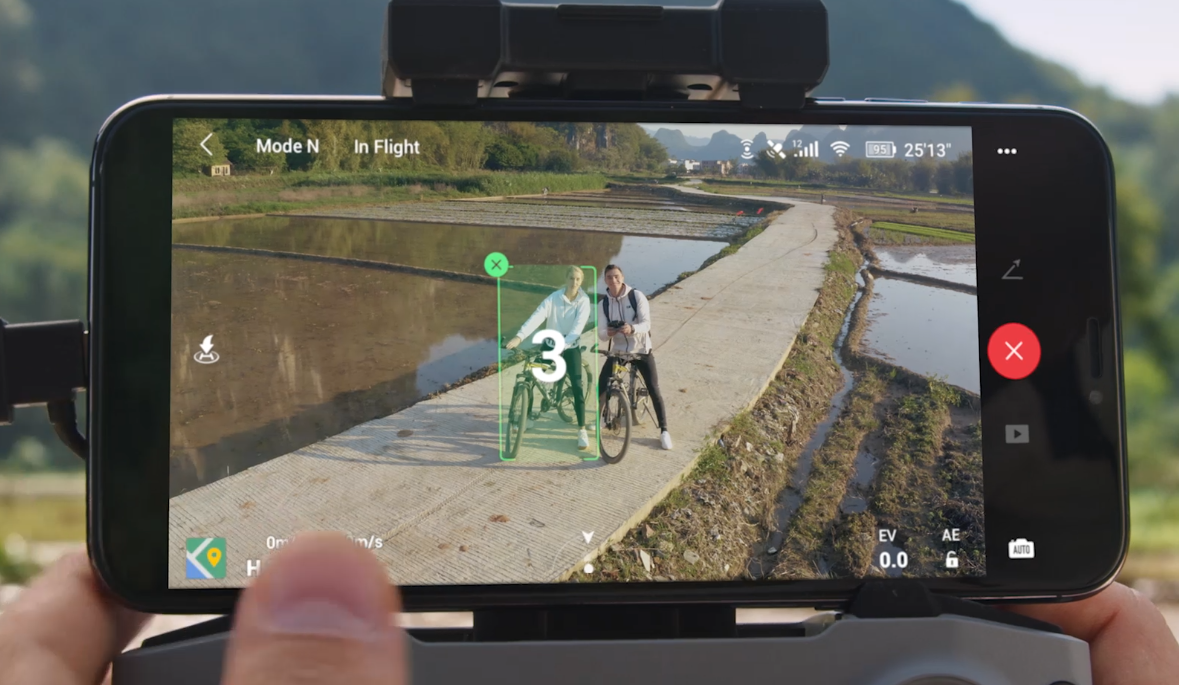
Smart functions
Q. For which of the four Hyperlapse modes is 8K resolution relevant?
A. 8K resolution is only available for Free and Waypoint modes.
Q. What intelligent flight and shooting modes does the Mavic Air 2 support?
A. The Mavic Air 2 supports QuickShots, Hyperlapse, and FocusTrack.
Q. What is FocusTrack mode?
A. FocusTrack consists of three different smart tracking modes: ActiveTrack 3.0, Point of Interest 3.0 (POI) and Spotlight 2.0. All three modes offer different tracking scenarios for any situation.
Q. Are there any video recording settings where APAS 3.0 or FocusTrack are not available?
A. APAS 3.0 is not available when recording video at 4K / 60fps, 4K / 50fps, 4K / 48fps, 2.7K / 60fps, 2.7K / 50fps, 2.7K / 48fps, 1080p / 240fps, 1080p / 120fps, 1080p / 60fps, 1080p / 50fps and 1080p / 48fps.
FocusTrack is not available when recording video at 4K / 60fps, 4K / 50fps, 4K / 48fps, 2.7K / 60fps, 2.7K / 50fps, 2.7K / 48fps, 1080p / 240fps and 1080p / 120fps.
Q. Which video players are best for viewing 8K Hyperlapse frames?
A. The developer recommends PotPlayer for Windows systems and SPlayer for macOS.

Firmware
Q. How do I update the Mavic Air 2's firmware?
A. You can update the firmware via the DJI Fly mobile app or DJI Assistant 2 software for the Mavic (available for Mac and Windows). All of them are available for download on the official DJI website.
Q. What should I do if the firmware versions of the remote control and the battery do not match?
A. Use the DJI Fly app or DJI Assistant 2 software for the Mavic to update the firmware.
Q. Where can I download the DJI Fly app?
A. To download the DJI Fly app, visit the official DJI Air 2S download page at https://www.dji.com/air-2s/downloads.
Video
From the developer
Video of unpacking and preparing the drone for operation.
Video tutorial on first launching the Mavic Air 2.
Control Panel Overview.
Video instruction on using Focus Track.
Video instruction for creating Hyperlapse video.
Video tutorial on how to use the Smart Return To Home function.
Video instructions for installing and removing propeller guards.
Video instructions for installing and removing ND filters.
Video instructions for updating the firmware.
From users
Test for max. removal distance.
DJI Mavic Air 2 drone review.
Active Track 3.0 test in the forest.
Comparative review of DJI Mavic Air 2 vs Mavic 2 Pro.
Comparative test for the quality of shooting Mavic Air 2 vs Mavic Air vs Mavic 2 Pro vs Mavic Mini.
Mavic Air 2 vs Skydio 2 Comparison Test Following.
.







